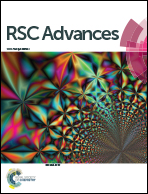Thermal degradation and flammability properties of multilayer structured wood fiber and polypropylene composites with fire retardants
Abstract
Single and multi-layer structured wood fiber and polypropylene composites (WPPCs) filled with magnesium hydroxide (MH), expandable graphite (EG), or ammonium polyphosphate (APP) were prepared. Thermal degradation and flammability properties of the composites were determined by thermogravimetric analysis and cone calorimetry. Results of both thermogravimetry and cone calorimetry indicated that single layer WPPC filled with MH, EG or APP reduced the HRR and THR, and increased the mass of residue compared with the control sample. The results on fire performance of multilayer structured WPPC indicated that the improvement or depravation on fire retardance properties of the WPPC depends on the different mechanism of fire retardants. EG showed the best fire retardance properties in the multilayer structured WPPC system compared to MH and APP. Furthermore, the use of the EG in the cap layer greatly reduced the heat and smoke release of the overall multilayer structured composites compared to single layer fire retardant WPPC. The residues of combusted WPPC after the cone calorimetry test were characterized by scanning electron microscopy (SEM), the results further revealed that the presence of EG in the cap layer could protect the underlying substrate from degradation and char formation.


 Please wait while we load your content...
Please wait while we load your content...